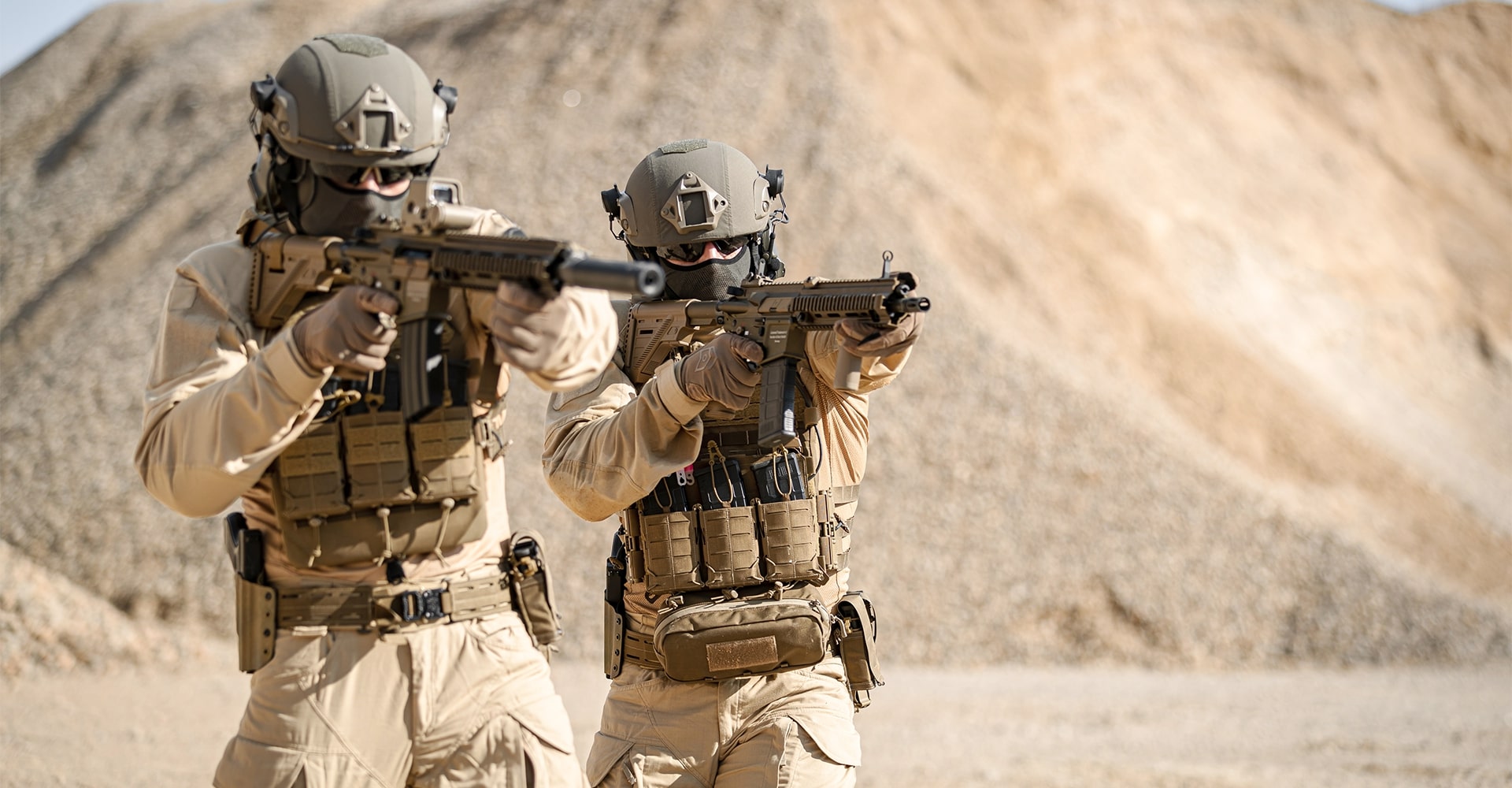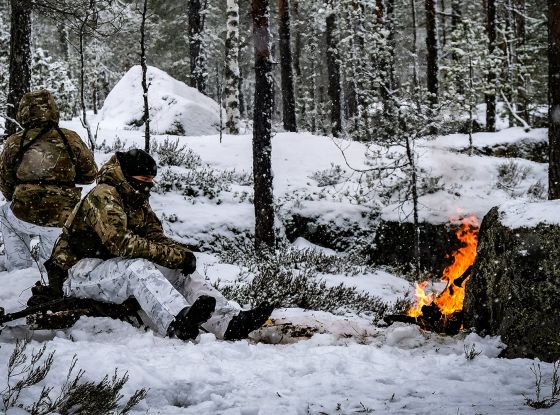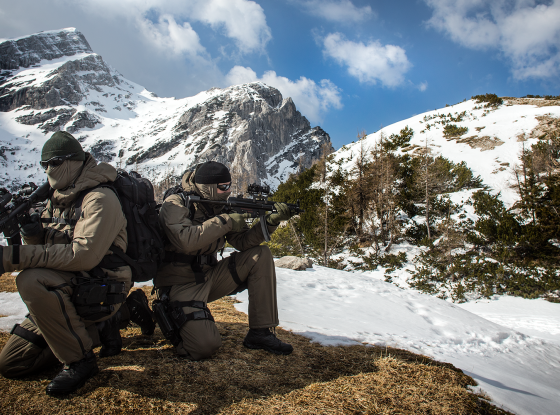The air around you feels heavy. You’re having trouble breathing. Sweat drips into your eyes, stinging your vision and soaking through your gear. In this kind of heat, your body is already in survival mode, and what you wear can either help you push forward or force you to fall back. The wrong materials trap heat, cling to the skin, and drain your endurance. The right hot-weather gear moves moisture, allows airflow, and lets you stay sharp under pressure. Whether you're advancing through dust-blown desert corridors or cutting through humid jungle terrain, the fight against heat is constant. That’s why choosing the right tactical clothing for hot weather operations isn't just about comfort, it's about maintaining combat effectiveness when the environment is working against you.
In this blog post:
Know Your Environment: Heat Comes in Different Forms
Not all heat is the same. And not all hot-weather tactical gear performs the same in different types of climates.
Hot and Dry (Deserts, Highlands)
Dry heat environments like deserts or high plateaus drain moisture rapidly. Sweat evaporates almost instantly, giving a false sense of cooling, while silently pulling critical hydration reserves from your body. Dehydration becomes a real and constant threat. Temperatures can spike during the day and plummet at night, requiring gear that can manage both extremes.
Dust is another relentless factor. It infiltrates every seam, joint, and zipper. Over time, it degrades materials, blocks venting systems, and compromises the integrity of your clothing. What feels breathable in a temperate environment can suddenly turn abrasive or ineffective when clogged with fine particulate.
Here, the ideal tactical clothing needs to be:
- Lightweight but rugged: to endure exposure without adding unnecessary burden.
- Efficiently ventilated: to release heat but reduce exposure to dust.
- Quick-drying: to cope with temperature swings and prevent nighttime chill.
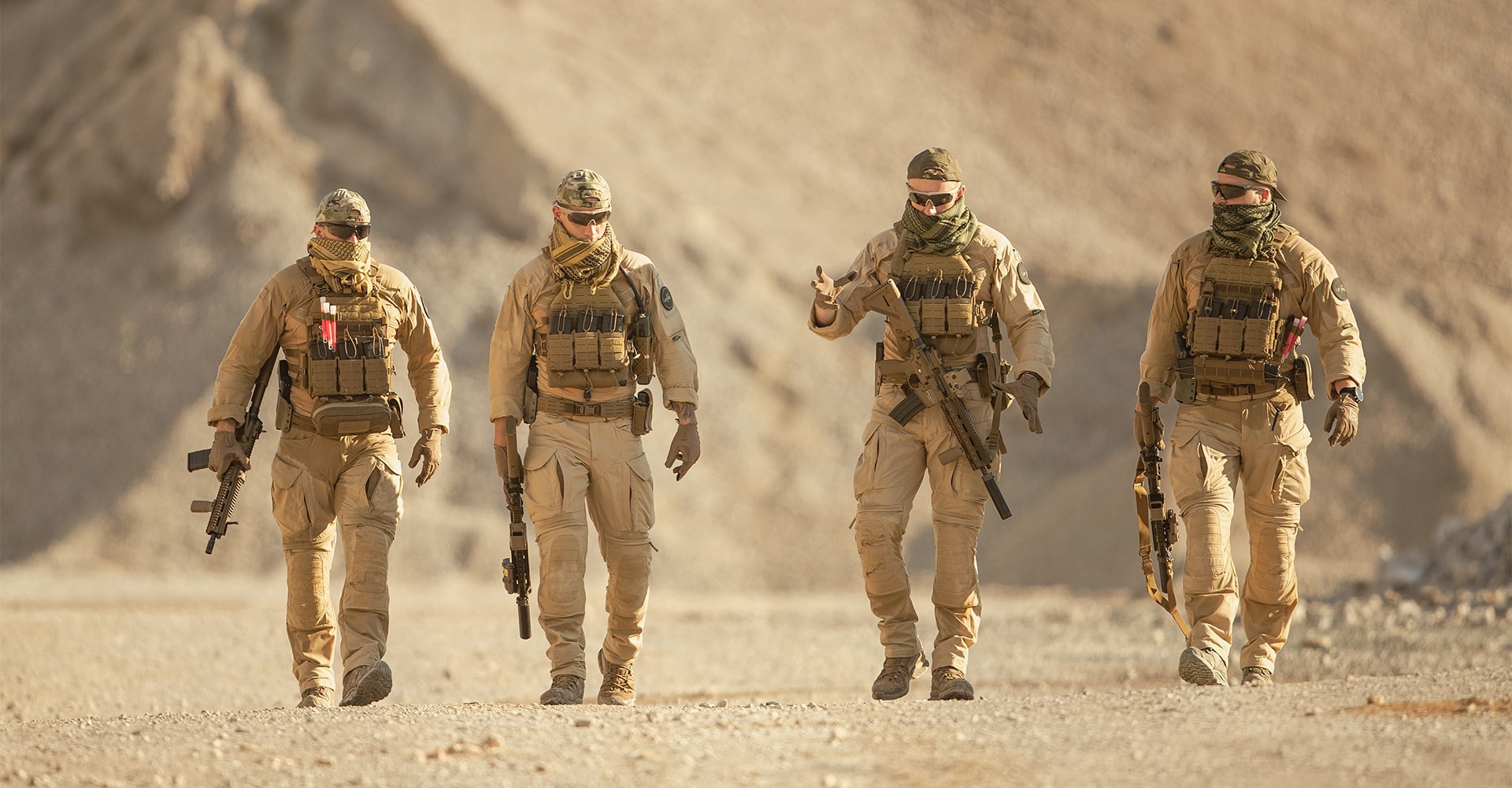
Hot and Humid (Jungles, Swamps, Tropical Zones)
Humidity is a different beast. In tropical environments, the air is already saturated—so sweat can’t evaporate. It clings to the skin, pooling in pressure points and creating a constant risk of heat rash, fungal infections, and chafing. Add dense undergrowth, sharp vines, insects, and sudden rainstorms—and the terrain becomes as brutal as the climate.
Here, airflow alone isn’t enough. Your hot-weather tactical clothing must actively move moisture away from the body and dry fast. Materials that retain water—even minimally—become a liability, turning heavy, clammy, and increasingly unhygienic over time.
Gear should be:
- Ultra-breathable: to minimize skin saturation.
- Antimicrobial: to reduce odor and bacterial growth.
- Abrasion-resistant: to handle thorny vegetation and friction points.
For a deep dive into how fabric choice can make or break your performance, see Polyamide vs. Cotton: What’s Best for the Tropics?. It breaks down the science behind key materials used in tropical-ready clothing.
And if you're looking for operational insights on navigating the harsh environments, The Ultimate Guide to Jungle Warfare – Pro Advice offers real-world strategies for tackling the jungle head-on.
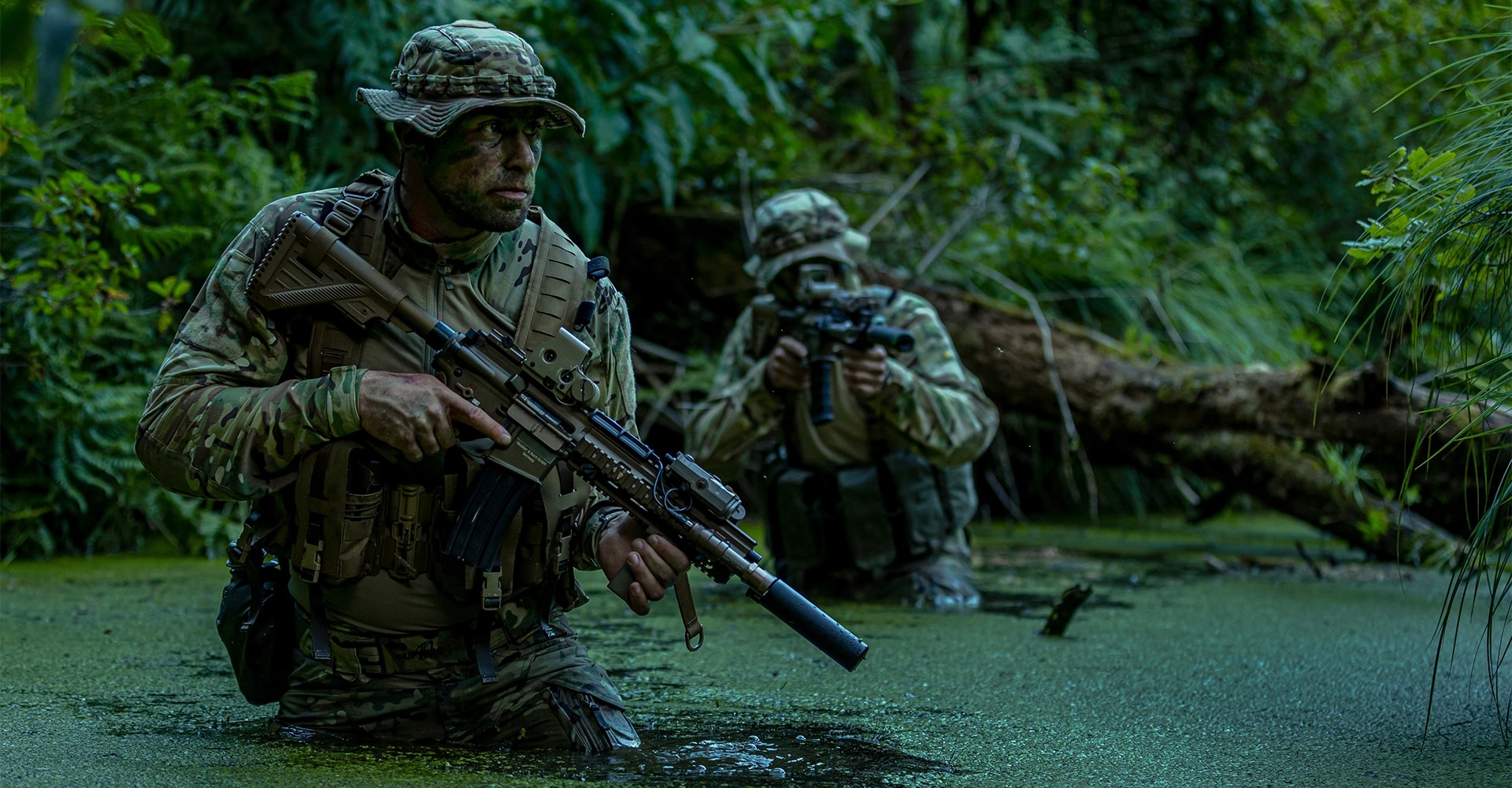
SUBSCRIBE TO UNLOCK OUR EXCLUSIVE CONTENT
Enter your email and get timely updates and relevant intel on tactical topics directly to your inbox.
You are signing up to receive updates via e-mail from which you can opt out at any time. Visit our privacy policy for more info.
Hot and Urban (Urban Heat Zones)
Urban settings create their own climate. Heat reflects off asphalt, metal, and glass, building up in enclosed spaces and radiating back from every surface. This phenomenon—known as the urban heat island effect—can push real-feel temperatures several degrees higher than surrounding rural areas.
Unlike open terrain, cities restrict airflow, turning alleyways and narrow streets into heat funnels. Layered gear, especially body armour, becomes a thermal trap. The challenge isn’t just temperature—it’s trapped heat and zero ventilation.
Operators in these zones need gear that supports maximum airflow while accommodating protective layering, without tipping into overheat territory. Even small adjustments—like where vents are placed or how fabrics dry—can influence endurance during extended missions in dense, heat-retaining spaces.
Urban gear must be:
- Heat-dissipating: with smart ventilation zones to avoid thermal buildup under armour.
- Ergonomically cut: to support high-mobility in confined spaces.
- Discreet and durable: to blend functionality with the hard surfaces and potential abrasion of the built environment.
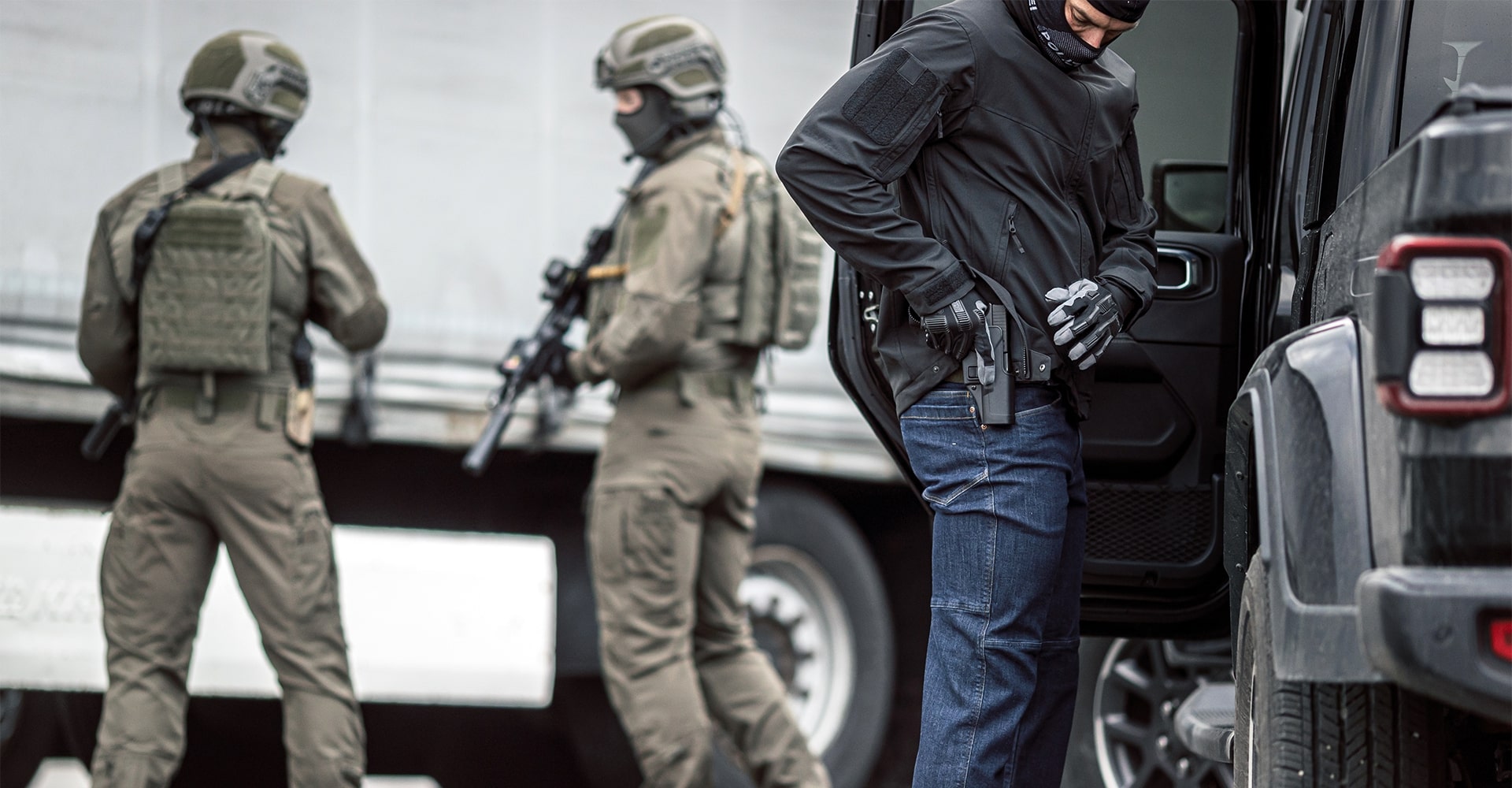
In all types of heat, the human body relies on sweating and evaporation to regulate temperature. But that only works if sweat can evaporate. When airflow is poor or humidity is high, core temperature rises fast—leading to fatigue, dehydration, and in worst cases, heat stroke. Recognize the signs of overheating and stay ahead of danger with this guide on heat-related illnesses. Understanding symptoms is the first step toward prevention.
Before selecting your gear, take a hard look at your operational setting. Because what works in dry heat could fail fast in humidity—and vice versa. Watch our video guide to learn how to combine combat shirts and pants into climate-specific gear setups.
Feature Breakdown: What to Look For in Hot Weather Tactical Clothing
Your gear must perform as hard as you do. Tactical clothing for high-heat environments needs to manage temperature, allow unrestricted movement, and protect your skin—all without becoming a burden. Here's how top-performing clothing earns its place in your kit.
1. Breathability Where It Counts
In extreme heat, heat buildup leads to faster fatigue and reduced focus. Ventilation must be intentional—placed where your body generates the most heat, and designed to keep you cool without compromising protection.
Rather than relying on all-over mesh (which rarely holds up in tough terrain), elite tactical clothing uses airflow engineering. That means smart vent placement, breathable stretch panels, and torso fabrics that pull moisture outward while letting air circulate underneath plate carriers and packs.
Top-tier hot weather tactical clothing includes:
- Mesh-lined armpits, lower backs, and inner thighs
- Vents with overlap covers
- Articulated knees and elbows that enable air circulation during movement
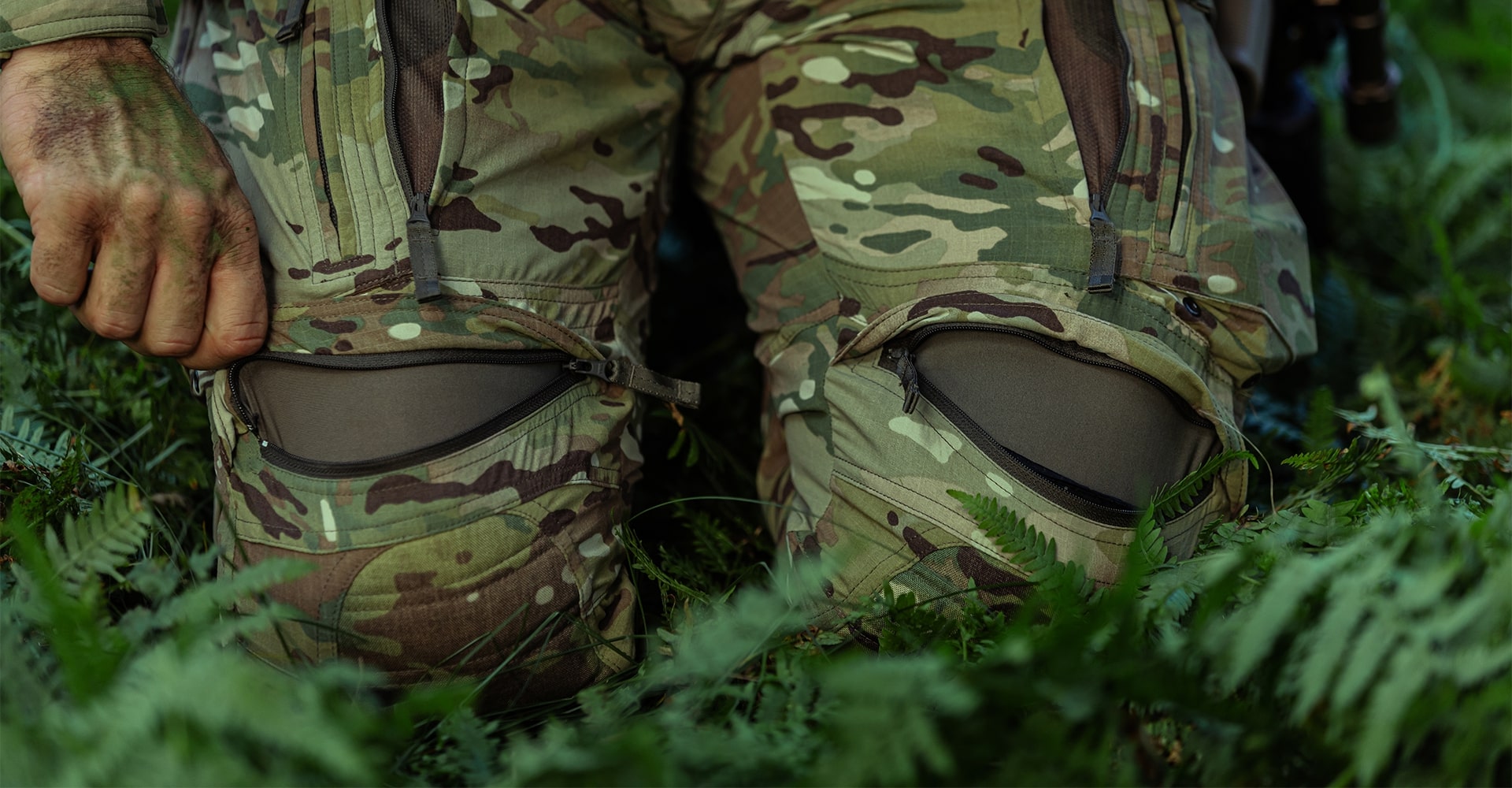
2. Quick-Drying, Sweat-Resistant Fabrics
Moisture control is mission-critical in both arid and humid climates, but for different reasons. In dry heat, evaporative cooling helps lower body temperature. In humid heat, that system fails—because sweat lingers, saturates, and chafes.
Clothing made from cotton or untreated fabrics absorbs that moisture and holds onto it, slowing you down and increasing your vulnerability to heat stress or infections.
The solution: high-performance synthetics with rapid drying times. These materials actively draw moisture from the skin, disperse it across the fabric surface, and dry quickly to maintain comfort and mobility.
What to look for:
- Moisture-wicking synthetics (avoid cotton at all costs)
- Lightweight polyamide or polyester blends
- DWR (Durable Water Repellent) coatings for light rain and damp conditions
3. Durability Without the Heat Load
Extreme heat accelerates wear. High-friction areas like the knees, elbows, and seat get hammered as temperatures rise. But the answer isn’t to just add more fabric. It’s to build smart reinforcements—only where you need them.
The best tactical pants for hot weather use abrasion-resistant materials precisely mapped to high-wear zones. Meanwhile, the rest of the garment is constructed with ultralight, stretchable fabric that minimizes weight and heat retention.
Tactical pants and shirts should:
- Reinforce knees, seat, and elbows only where needed
- Use stretch panels at joints to reduce resistance
- Maintain abrasion resistance without thick layering
It’s not about choosing between comfort or protection. It’s about engineering both into the same design.
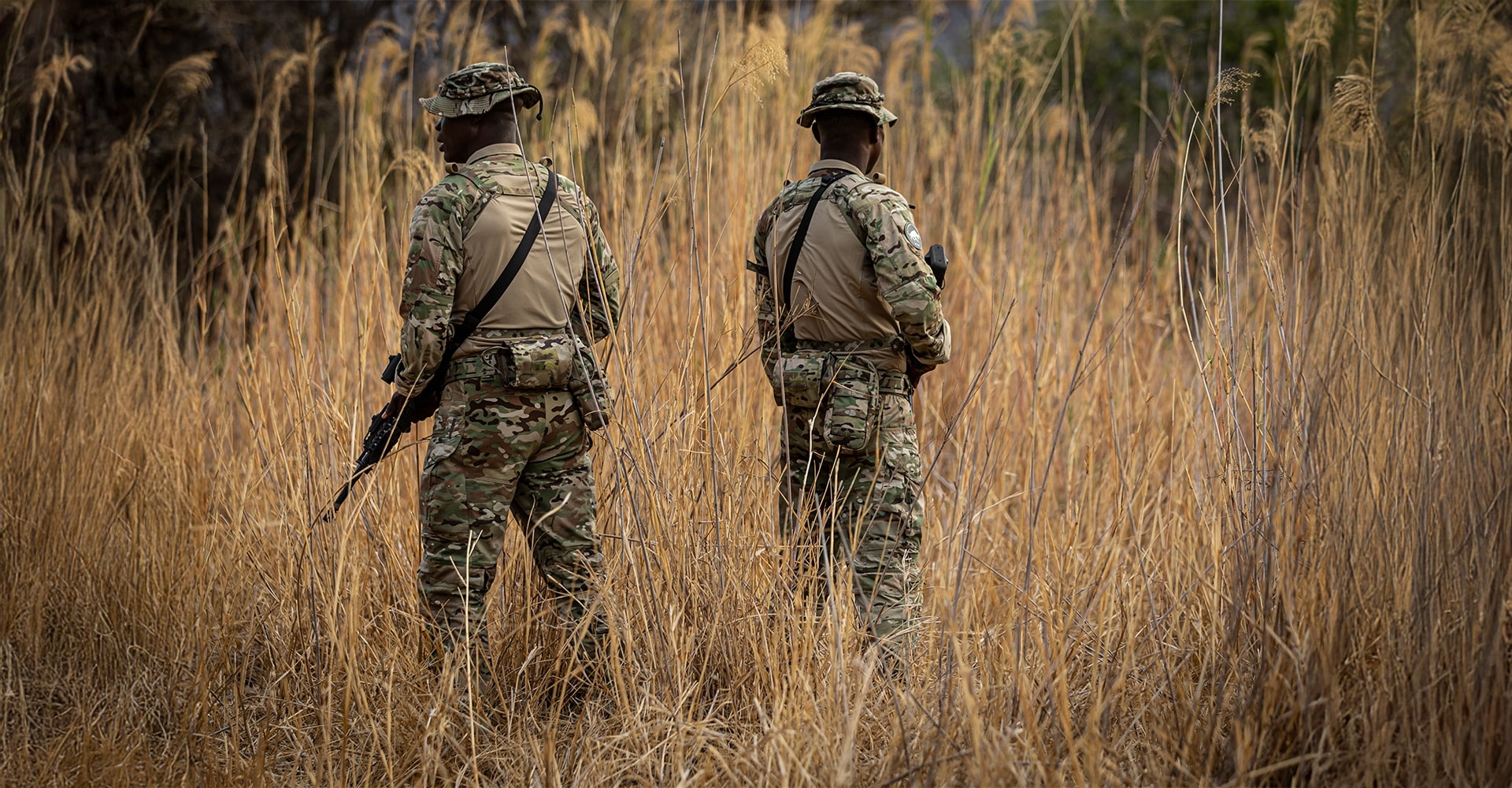
4. Fit That Works With the Body, Not Against It
In high-temperature conditions, every restriction slows you down. Tactical clothing should move like a second skin—protecting without constricting, and adapting without flapping loose.
A poor fit traps heat and causes unnecessary rubbing, especially when soaked with sweat. Excess fabric adds weight and slows airflow, while tight fits restrict movement and compromise breathability.
What to look for:
- Articulated knees and elbows that follow natural body movement
- Gusseted crotches and underarms for dynamic motion
- Sleeve and leg designs that avoid ballooning or clinging
5. Smart Layering in Hot Environments
Layering isn’t just for the cold. In high heat, a tactical layering system lets you regulate core temperature, manage sweat, and maintain skin hygiene across extended operations.
A thin, sweat-wicking base layer pulls moisture away from the skin. A breathable mid-layer adds structure and airflow, while an outer layer shields from solar exposure, bugs, or environmental threats like branches and brush.
Why it works:
- Prevents skin-on-fabric friction that causes rash
- Allows quick changes of saturated base layers
- Supports cooling through active moisture transport
Tip: In jungle or swamp operations, rotating multiple base layers between missions keeps the skin healthier and reduces the risk of infection.
Outsmarting the Heat: Translating Conditions into Tactical Choices
Knowing your environment is one thing—adapting to it operationally is another.
In the Desert
- Priority: Protect hydration and structural integrity of your gear.
- Adaptation: Rotate between vented and closed positions to manage heat vs. dust intrusion. Keep zippers clean and seams inspected—sand infiltrates fast.
- Behavioral Tip: Schedule movement for cooler hours where possible. Use shade tactically, even if minimal.
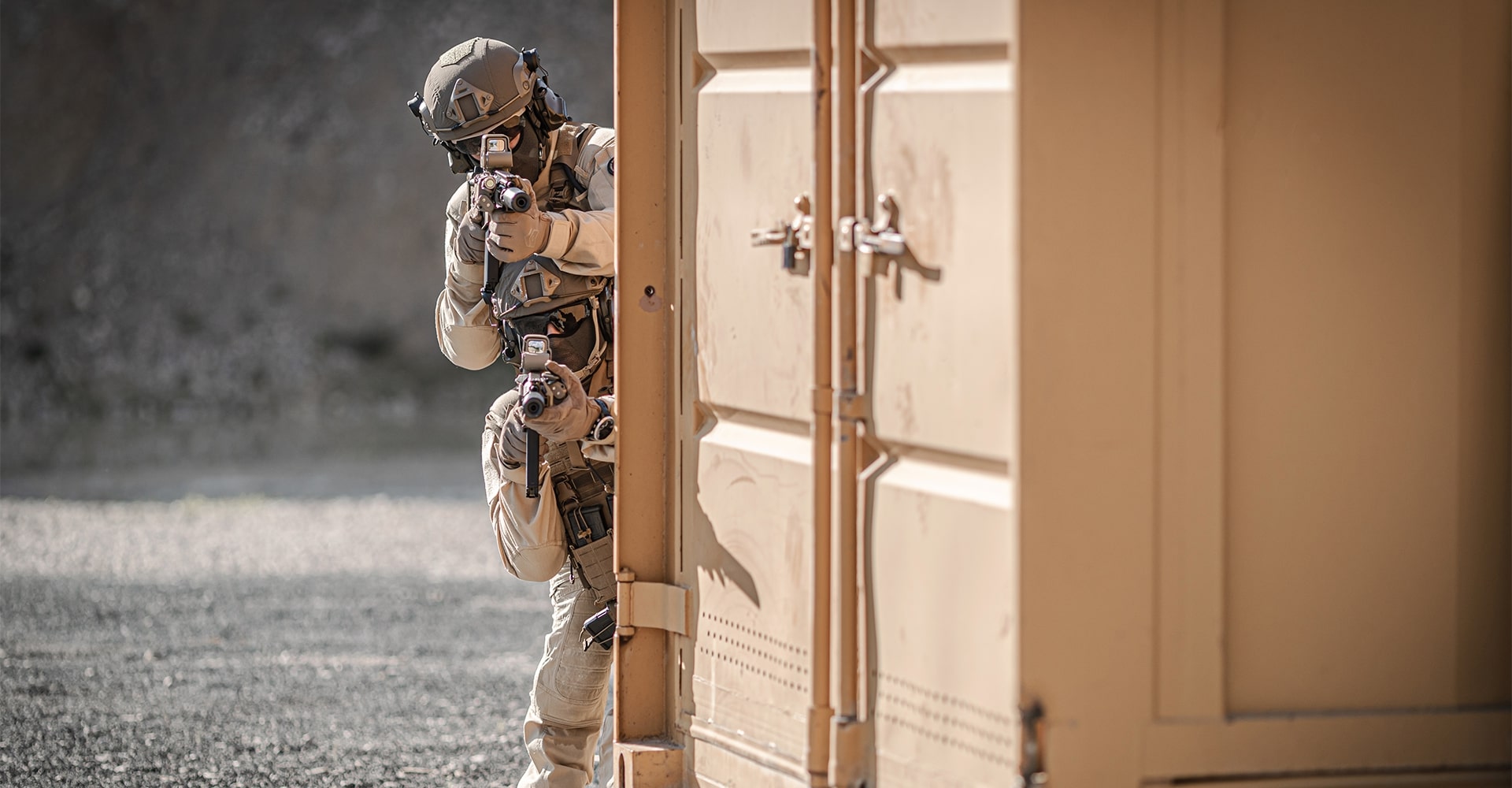
In the Jungle
- Priority: Stay dry, prevent skin breakdown, and keep mobility high.
- Adaptation: Use antimicrobial, quick-dry clothing in modular layers. Avoid long wet exposures—rotate base layers mid-operation if feasible.
- Behavioral Tip: Establish “dry kit” routines for downtime. Elevate gear and body when stationary to reduce fungal risks.
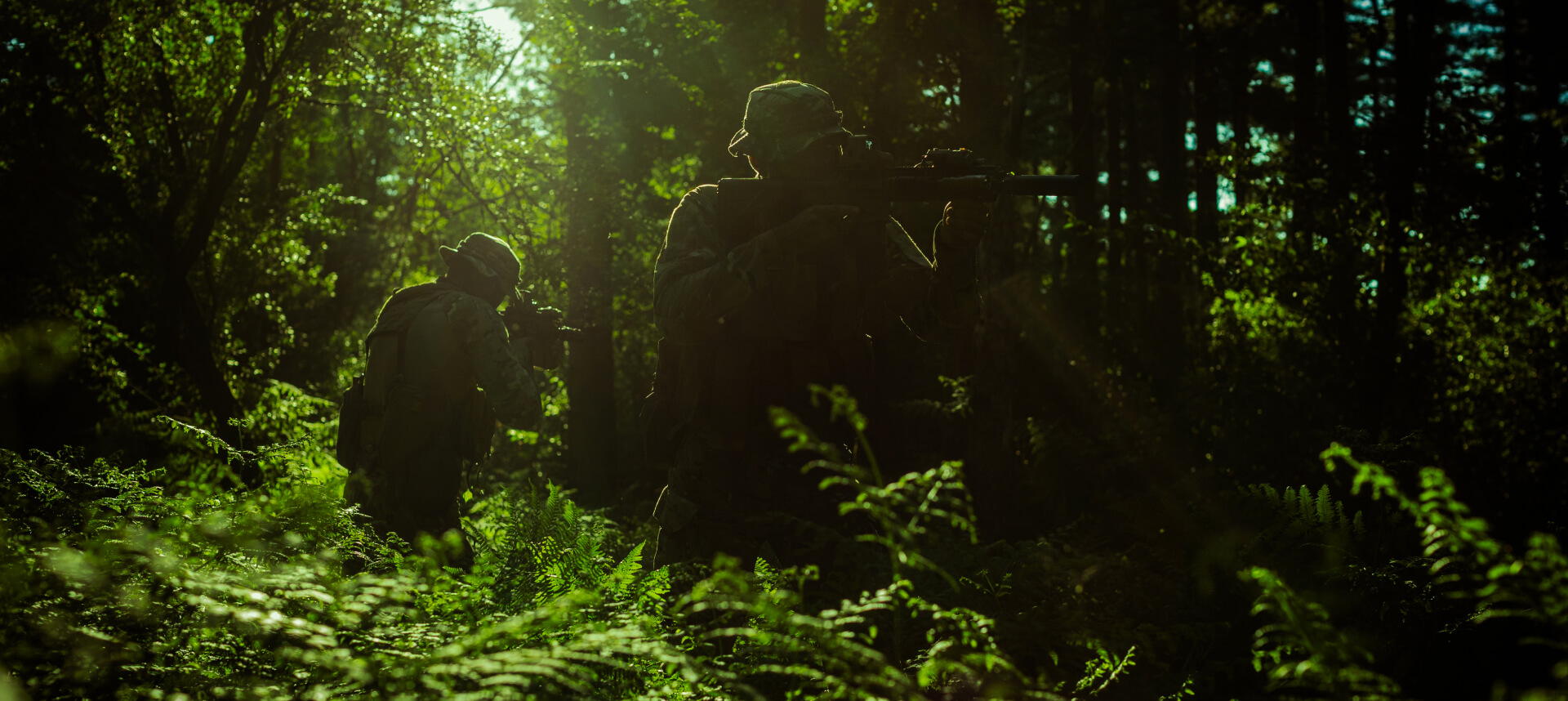
In Urban Heat Zones
- Priority: Maintain airflow and avoid thermal stacking.
- Adaptation: Select gear that ventilates beneath armour. Loosen straps or remove layers during downtime to vent core heat.
- Behavioral Tip: Use vertical space (rooftops, parking decks) for better air movement when static.

This isn’t just about choosing clothing—it’s about how the right clothing lets you implement the right behaviors for the setting. Gear and movement strategies must work hand in hand to keep you in the fight longer.
Conclusion
The best hot weather gear isn’t the toughest or the lightest by default. It’s the most balanced. It’s built to help your body manage thermal stress, maintain peak mobility, and stay effective hour after hour. Browse UF PRO’s full line of tactical clothing engineered for high-heat environments.

